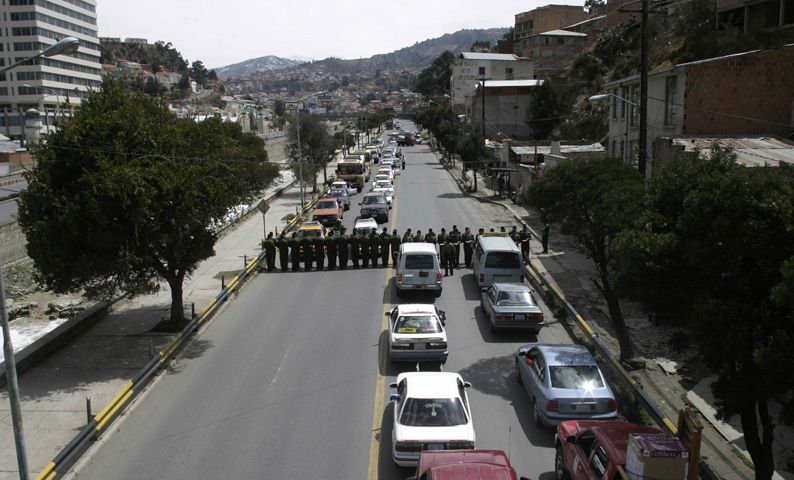













| Olive Green |
|
As it happens, "Olive Green" is not merely the color of the police uniforms, but also the nickname of the force. Furthermore, demonstrations using human barriers and blockades are daily occurrences in Bolivia. In 2003, when this work was made, the police protested as well, but their protest took the form of a strike, which – through absence – increased the reign of chaos in the city. Alvarado skillfully knit all these elements into a four-minute video performance that juxtaposes intensity and serenity, and weaves the specific national context into a wider, universally accessible visual narrative. |
| Killing Time |
How many drops of water in a wet robe? How long would it take to measure this? Does this sound like a high-school math problem? In this piece, Alvarado uses the immaculate sport of diving to create a messy scene that depicts an off-beat measuring tool. The divers wear clothes that function as water-carriers. They are weighed before and after they dive, so that the amount of water drawn from the pool can be calculated. Alvarado suggests that it may be just the preliminary before she sets out to calculate the number of water drops in the divers' clothes, as well as their path and their speed. At the very end, the divers undress and are exposed in their "normal" performance outfits. The story begins in an orderly fashion, but disorder soon conquers the stage. The entire scene is practically a device for killing time until real diving practice starts as the video ends. |